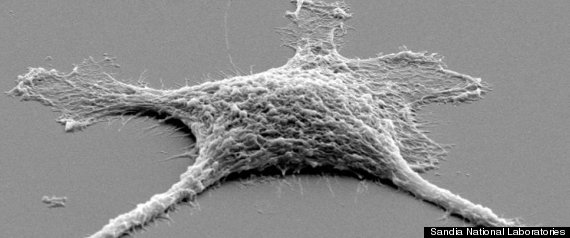Biological researchers have created dead 'zombie' cells in the lab which outperform living cells.
Seriously.
A team at Sandia National Laboratories and the University of New Mexico have innovated a technique whereby mammalian cells are coated with ...
The silica replicants can survive greater pressures and temperatures than flesh, and perform many functions better than the original cells did when alive.
By painting the cells with silicic acid in a petri dish, the acid embalms the organic matter in the cell down to the nanometer level.
The silica then acts as a permeable armour, according to Michael Hess at the American Office of Public Affairs.
That means the cell beneath can be used as a catalyst at far greater temperatures than normal.
Heating the silica to around 400C evaporates the protein in the cell, but leaves the silica as a three-dimensional replica of the "formerly living being", Hess said.
"The difference is that instead of modeling the face, say, of a famous criminal, the hardened silica-based cells display internal mineralized structures with intricate features ranging from nano- to millimeter-length scales."
The valuable biological material can thus be converted into a reusable fossil, which could have uses in fuel cells, decontamination and sensor technology, as well as commercial manufacturing.
Lead researcher Bryan Kaehr said in a statement that the research distinguishes between a mummy cell and a zombie cell.
"Our zombie cells bridge chemistry and biology to create forms that not only near-perfectly resemble their past selves, but can do future work," he said, terrifyingly.

Huffington Post UK | By Michael Rundle
Posted: 14/02/2013 12:21 GMT | Updated: 18/02/2013 08:04 GMT